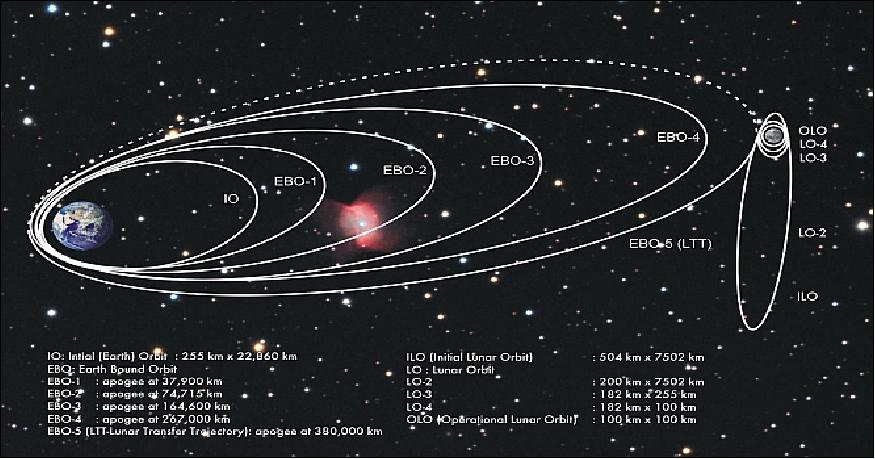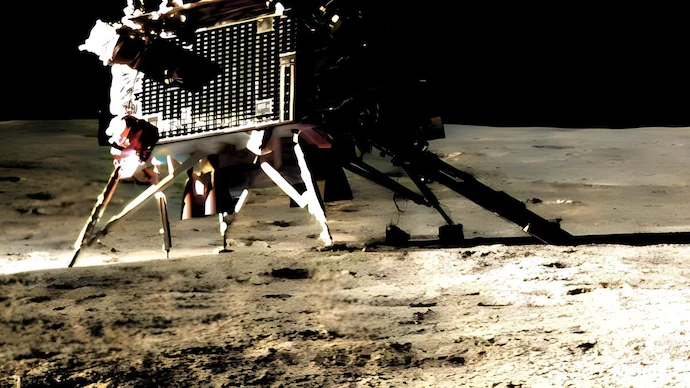EXPLORATION
Chaandrayaan: Unraveling the Past and Present of India's Lunar Exploration
HAMZA MAJID
October 1st, 2023
Chandrayaan-3 Mission:
Updates:
The communication link is established between the Ch-3 Lander and MOX-ISTRAC, Bengaluru.
Here are the images from the Lander Horizontal Velocity Camera taken during the descent. #Chandrayaan_3#Ch3 pic.twitter.com/ctjpxZmbom
— ISRO (@isro) August 23, 2023
Chandrayaan-3 Mission:
Updates:
The communication link is established between the Ch-3 Lander and MOX-ISTRAC, Bengaluru.
Here are the images from the Lander Horizontal Velocity Camera taken during the descent. #Chandrayaan_3#Ch3 pic.twitter.com/ctjpxZmbom
Step into the realm of Chandrayaan-3, India's groundbreaking lunar mission, boldly set on landing at the unexplored southern pole of the moon. Despite internal challenges, India has achieved an unprecedented milestone that surpasses the wildest imaginations of space agencies. This lunar expedition represents a pioneering step, the first of many more to come in the remarkable Chandrayaan journey. The third chapter in this story stands out as the most triumphant, setting new standards. Notably, it's also the most cost-efficient lunar mission, with a budget of just $74 million, a fraction of what other lunar missions have cost (the Russian mission to the south pole of the moon was $200 million). To put it in perspective, Chandrayaan-3's cost is less than the production cost of the Barbie movie, which is around $145 million. Chandrayaan-3 has took off from Sriharikota on the fourteenth of July, 2023, and successfully landed on the moon on the 23rd of August, 2023, marking a historic achievement in India's lunar exploration journey.
History of preceding missions
India's space program has a long and remarkable history of lunar missions. It all began with the launch of Chandrayaan-1 in 2008, marking India's first step in lunar exploration. This mission was a significant success as it not only confirmed the presence of water molecules on the lunar surface but also discovered evidence of hydroxyl ions.

Orbit determination of Chandrayaan-1 (Photo Credit: ISRO)
Building upon this achievement, India launched Chandrayaan-2 in 2019, with the aim of further advancing our understanding of the Moon. Unfortunately, the lander Vikram encountered technical difficulties during its descent and crashed on the lunar surface. While this setback was disheartening, it did not dampen India's spirits or deter future efforts. Unfazed by the challenges, ISRO (Indian Space Research Organization) is geared up for their next lunar mission - Chandrayaan-3. The goal? To successfully land a rover on the Moon and conduct experiments that will enhance our knowledge of Earth's celestial neighbor. Each mission brings new opportunities for exploration and discovery. India's commitment to pushing boundaries in space exploration is commendable, demonstrating their dedication to scientific advancements and global collaborations.
India's space program
India's space program has come a long way since its inception. With the launch of Aryabhata in 1975, India marked its entry into the world of space exploration. This mission was followed by several others, including the successful Chandrayaan-1 and Mangalyaan missions. Chandrayaan-1, launched in 2008, was India's first lunar probe. It made significant discoveries, confirming the presence of water molecules, which has enhanced future prospects for sustaining life beyond Earth. Mangalyaan, also known as the Mars Orbiter Mission, was another milestone for India. It became the first Asian nation to reach Mars orbit on its inaugural attempt.
The success of these missions has established India as a formidable player in space exploration. The Indian Space Research Organisation (ISRO) has played a pivotal role in this journey, with its innovative approach and cost-effective solutions garnering international attention. One remarkable aspect of India's space program is its emphasis on affordability without compromising quality or ambition. ISRO has achieved remarkable feats within limited budgets, a valuable lesson for other countries, especially considering the scrutiny surrounding funding for space programs.

Launch configuration of Chandrayaan-1 (Source: ISRO)
Furthermore, ISRO's efforts extend beyond pure scientific research; they have practical applications as well. For example, their satellite launches have facilitated communication networks in remote areas and supported disaster management initiatives. India's space program is a testament to both innovation and determination. From its humble beginnings with Aryabhata to groundbreaking missions like Chandrayaan-1 and Mangalyaan, India has proven its ability to push boundaries and make significant contributions to scientific knowledge.
The Engineering Of The Rocket
TATA played a significant role in the production of Chandrayaan-3. The private firm customized many of the systems used in the lunar probe, including the soft landing system. TCE has been partnering with ISRO since 2005, making substantial contributions to the design and various mechanical aspects of the probe and other projects. Chandrayaan-3 utilizes a high-thrust liquid engine and bipropellant thrusters. These, combined with sophisticated onboard computers, enhance the precision of the probe and utilize a variety of sensors.
The Chandrayaan-3 mission consists of the Geosynchronous Satellite Launch Vehicle Mark III, the Orbiter module, the Lander module, and the Rover module. The Geosynchronous Satellite Launch Vehicle Mark III (GSLV Mk III) is a powerful rocket used to launch spacecraft from Earth into lunar orbit. The Orbiter module monitors the orbit of the lander-rover and transmits data to Earth. The Lander module transports the rover to the lunar surface and collects data. The Rover is a self-contained robotic vehicle that conducts research on the lunar surface. Additionally, Chandrayaan-3 reuses the rover and landing system of Chandrayaan-2. The thrusters of Chandrayaan-3 are quite literally ballet dancing in space, meticulously calculating every move of the probe, providing the perfect push and direction for the probe to maintain balance, much like a graceful ballet dancer. The key difference is that while a dancer performs to an audience's applause, this probe holds the hopes of millions of people on the blue marble. The engineering poetry extends to the landing of the rover, for which engineers had to account for multiple factors, such as space debris, the uneven surface of the moon, and the momentum of the spacecraft itself. All of these variables had to be precisely calculated while being millions of miles away from the destination in question.

An image captured by the Pragyaan rover showcasing the Vikram lander (Photo Credit: ISRO)
Through careful planning, innovative design choices, and meticulous attention to detail, ISRO's engineers have created a robust spacecraft capable of withstanding the extreme conditions inherent in space exploration missions. The Chandrayaan project has been a remarkable success for India's space program. Since its launch, the spacecraft has made significant discoveries that have enhanced our understanding of the Moon. One of the most significant findings of the project was the discovery of various molecules on the lunar surface. This discovery holds great importance for human exploration and colonization efforts, given the presence of sulfur molecules and other elements such as calcium, silicon, and iron. This opens up opportunities for sustaining life and mining on the Moon, which is quite unexpected, as elements like sulfur are known to be highly volatile.
"The scientific spirit is of more value than its products, and irrationally held truths may be more harmful than reasoned errors." - Thomas Huxley
Furthermore, Chandrayaan's instruments have assisted in mapping previously uncharted lunar regions with remarkable precision. The high-resolution images captured by its cameras have unveiled intricate geological formations, including craters, mountains, and valleys. These discoveries contribute to our understanding of lunar geology and enhance our ability to study other celestial bodies in our solar system. In addition to its scientific achievements, Chandrayaan has also underscored India's technological prowess in space exploration. The successful engineering behind this mission showcases India's capability to design and launch complex missions at a fraction of the cost compared to other nations.
Current Chandryaan 3 Situation
Chandrayaan-3 began its lunar journey by launching aboard an LVM3-M4 rocket on 14 July 2023 from the Satish Dhawan Space Centre Second Launch Pad in Sriharikota, Andhra Pradesh, India. This marked a significant milestone as it entered an Earth parking orbit with a perigee of 170 km and an apogee of 36,500 km. Continuing with the mission's progress, on 23 August 2023, the lander executed a braking maneuver at 30 kilometers above the Moon's surface, its engines firing for over 11.5 minutes. This descent brought it to an altitude of 7.2 km, where it then used eight smaller thrusters to stabilize itself, transitioning from a horizontal to a vertical position.
The rover, Pragyan, completed its assignments and entered sleep mode on 3 September. Regrettably, on 22 September, both the lander and rover missed their wake-up calls, and by 28 September, neither had responded, diminishing the prospects for further surface operations. From a scientific perspective, Chandrayaan-3 demonstrated its capabilities with a brief 'hop' on the lunar surface on 3 September. This involved ascending 40 cm and translating laterally, serving as a test with potential applications in future sample return missions. Additionally, data from the ChaSTE instrument, designed to study the Moon's heat conductivity, contributed to the creation of a thermal profile of the lunar surface. Among the mission's noteworthy findings was the "unambiguous" confirmation of sulfur's presence on the lunar surface near the south pole, providing previously unknown insights. This discovery earned accolades from experts, with NASA's Noah Petro describing it as a "tremendous accomplishment."

Pragan Rover has traversed over 100 meters and continuing (Source: @ISRO on X)
Chandrayaan has played a vital role in inspiring young minds across India to pursue careers in science and engineering. It stands as a testament to what can be achieved through determination, innovation, and collaboration. As we look forward to future endeavors in space exploration, it is evident that Chandrayaan has established a solid foundation for further progress. With the ongoing trend of increased global collaboration, there are boundless opportunities awaiting exploration beyond the confines of Earth. Chandrayaan is more than just an Indian space probe; it embodies humanity's curiosity about the universe we inhabit. As we continue to push boundaries, reach new horizons, and celebrate these remarkable achievements, we eagerly anticipate the discoveries that lie ahead in our cosmic journey.
Subscribe To Our Newsletter
Receive amazing space news and stories that are hot off the press and ready to be read by thousands of people all around the world.
